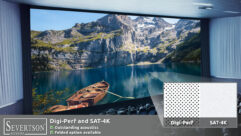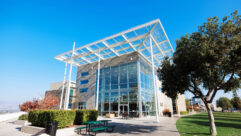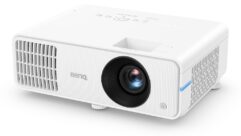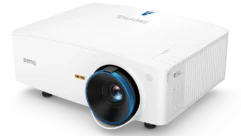Christie announced that it has shipped and installed more than 26,000 digital cinema projectors worldwide, led by the firm’s DCI-compliant Christie Solariaâ„¢ Series 2K and 4K projectors, from the popular Christie CP2220 and Christie CP2230 workhorses to the CP4220 and CP4230 thoroughbreds.
Christie’s news follows on Texas Instruments Incorporated (TI) (NYSE: TXN) announcement today that in the 12-month period between December 1, 2010 and November 30, 2011, the number of DLP CinemaA® screens worldwide grew to a total of 51,620 for an increase of 84 percent. As part of TI’s announcement, coincident with the Cine Asia 2011 conference in Hong Kong, TI awarded a commemorative plaque to Christie customer, United Circuit Cinemas, Shanghai Film Group.
“The versatility and convenience of our one-stop shopping approach based on our deep understanding of exhibitor needs has won us new customers across the globe. Christie continues to be the exhibitors’ choice for financing options like our innovative Virtual Print Fee (VPF) program in North America, leading edge-hardware and software and unparalleled support from Christie’s Managed Services,” said Jack Kline, president and chief operating officer, Christie Digital Systems USA, Inc.
“All of this enables exhibitors to deliver a filmmaker’s vision today in 2D, 3D, 4K and future-proofs their investments for 3D High Frame Rate (HFR) projection quality, depending upon the movie’s format and our clients’ budgets and audience expectations,” added Kline. “Combined with display support for 2D, 3D, 4K and 3D High Frame Rate (HFR) projection, exhibitors can choose between formats to suit their budgets and audience expectations and deliver a filmmaker’s vision or broadcast content the way it was intended while future-proofing their investments.”
Contributing to the total were projectors shipped to a score of exhibitors across the globe in November 2011, including units bound for Canada, Costa Rica, China, France, Japan, Mexico, Poland and the United States.
Not Resting on Success
Since 1999, Christie has been the dominant leader and expert in digital cinema projection. More than 12 years ago, Christie introduced the world’s first digital cinema projector, the Christie DCP-H, followed by the Christie CP2000 series and, most recently, the Christie Solariaâ„¢ series for both 2K and 4K resolutions. In addition to product launches and technology firsts, Christie was selected for the first large scale digital cinema deployments in all major regions of the world, including Europe, the Americas and Asia Pacific.
In keeping with its technology leadership and reputation for innovation at the service of its customers, the Christie Solariaâ„¢ Series solutions are being continually improved and expanded upon, with recent announcements including:
• Christie’s Solaria V.2.2 software application, to include Christie Previstoâ„¢ High Frame Rate (HFR) technology, among other firmware upgrades, which will allow Christie Solaria Series 2 projectors to accept video content at frame rates as high as 48 and 60 frames per second (FPS) per eye in 3D and up to 120 FPS in 2D;
• A fully integrated media block (IMB) solution with 4K and HFR capabilities that is physically integrated into the projector, becoming an integral part of the display device, giving the Christie IMB a secure, high bandwidth connection that can manage HFR and 4K content without compromising image quality;
• The new Christie Avias-TMSâ„¢, a Theater Management System (TMS) software application that allows exhibitors to centrally manage and orchestrate all of their projection operations within a cinema multiplex – regardless of the diverse projector, servers or operating systems (OS) in use.
All Christie projectors are designed to meet Digital Cinema Initiatives (DCI) specifications. They feature a new modular architecture for improved serviceability and ease of maintenance, with up to 25 percent lower cost of operation than competing technologies.










